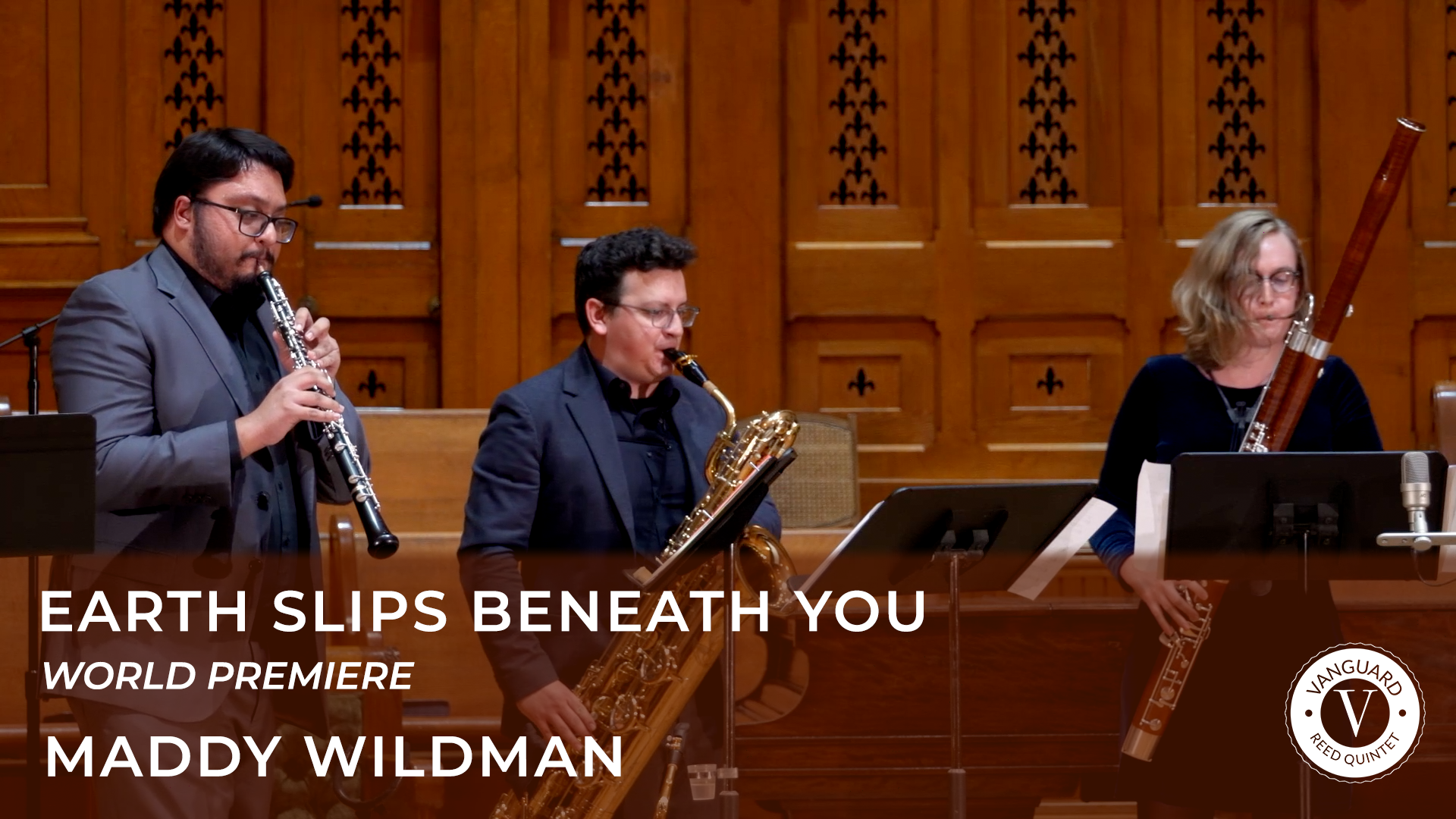New Year, New Music! We're happy to finally share with you the premiere performance of Maddy Wildman's Earth Slips Beneath You from our concert in October 2021.
Maddy's piece is an exploration of anxiety and how it often lives in the background, but can pile up over time, eventually spilling over. To capture that feeling, this piece is often intentionally unnerving, from the crunchy harmonies, to the quarter-step intervals in the upper voices, to the gradual climb in pitch over the course of the piece. Eventually, we arrive at the final build to the apex of the piece, aptly marked "Unleash the Screaming Baby" in the score, with the oboe and clarinet wailing in the stratosphere while the lower voices honk and rumble away. After all of this sound finally bubbles over, we're left in a more tranquil state, with the bass clarinet finishing the piece out.
Maddy proudly reports in her notes about this piece that the stressful and anxious feelings that inspired this piece have become less frequent and intense than when she originally wrote it in 2019. We were so glad to finally be able to perform it!



















Vanguard Reed Quintet returns to First Presbyterian Church of Ypsilanti on April 19 for an evening of reed quintet music exploring ideas of nature, mythology, and storytelling!